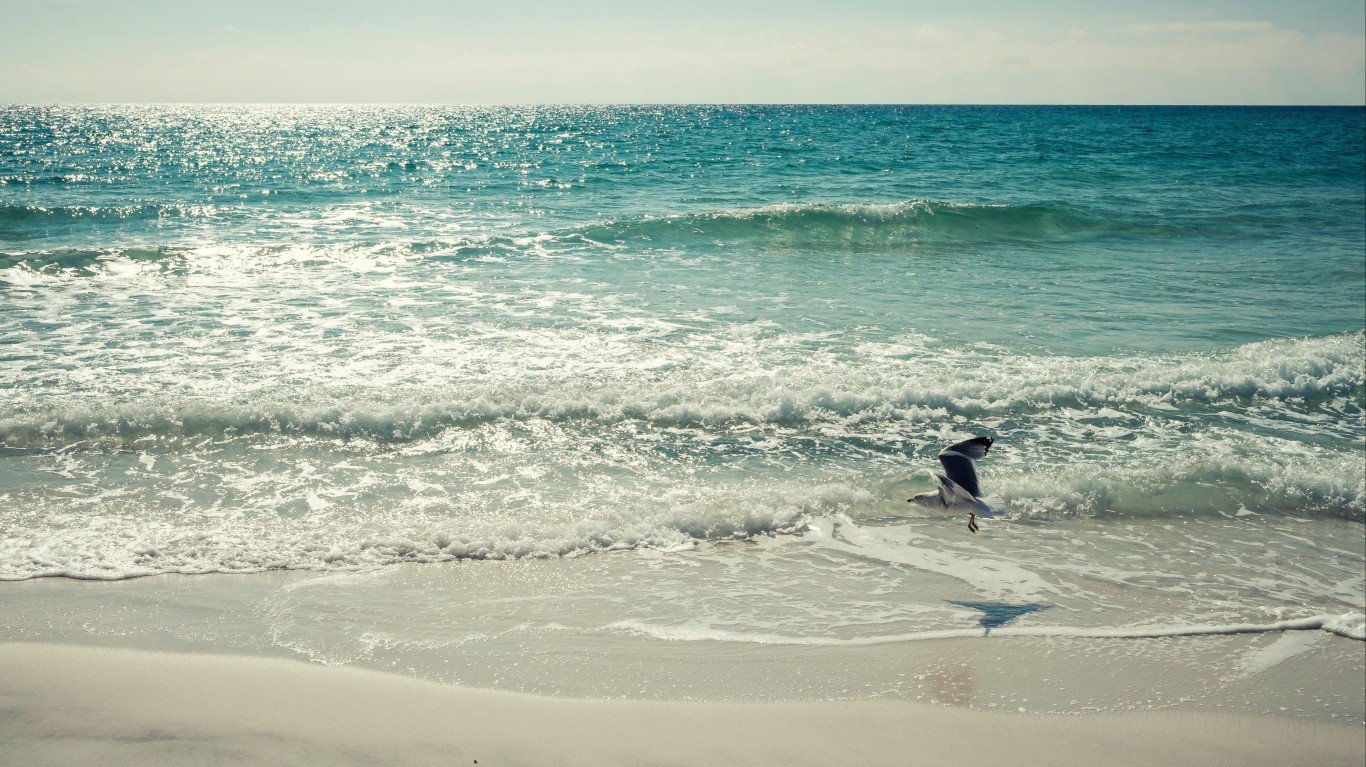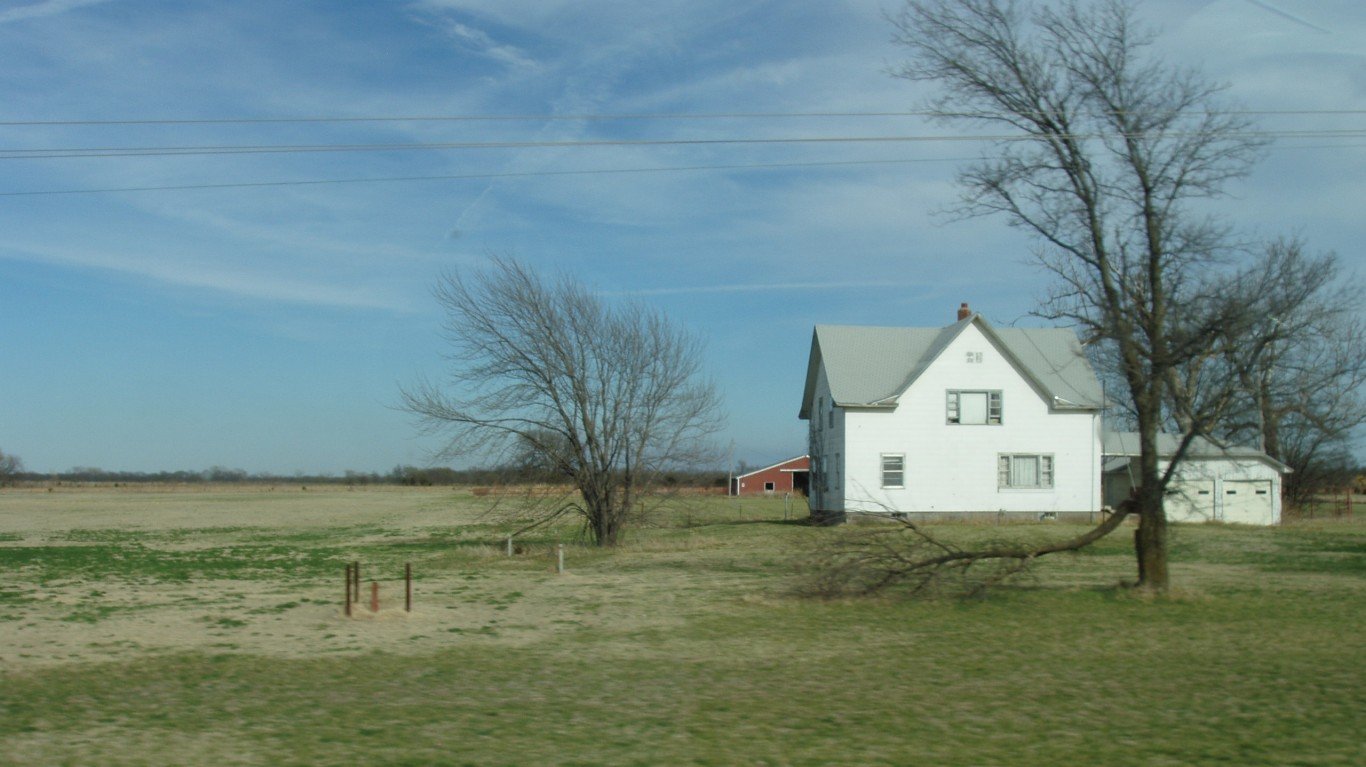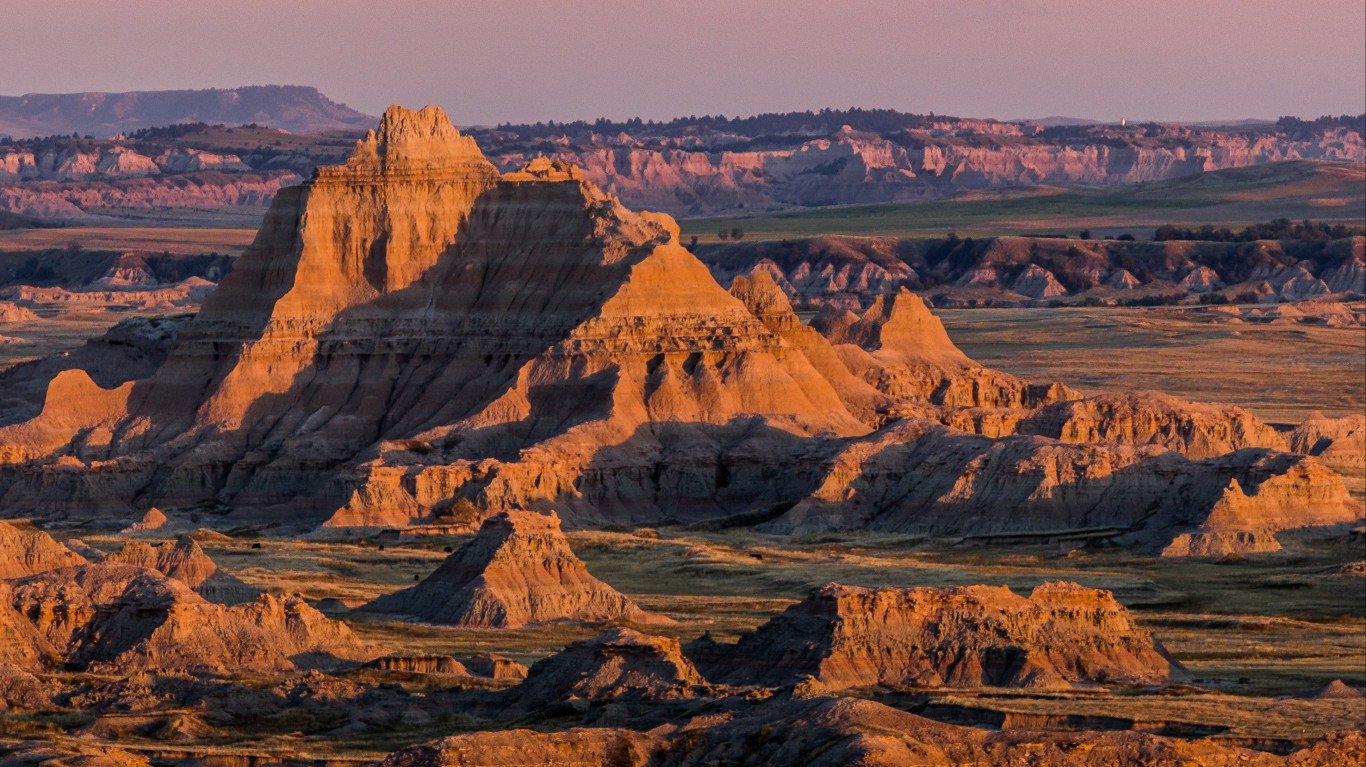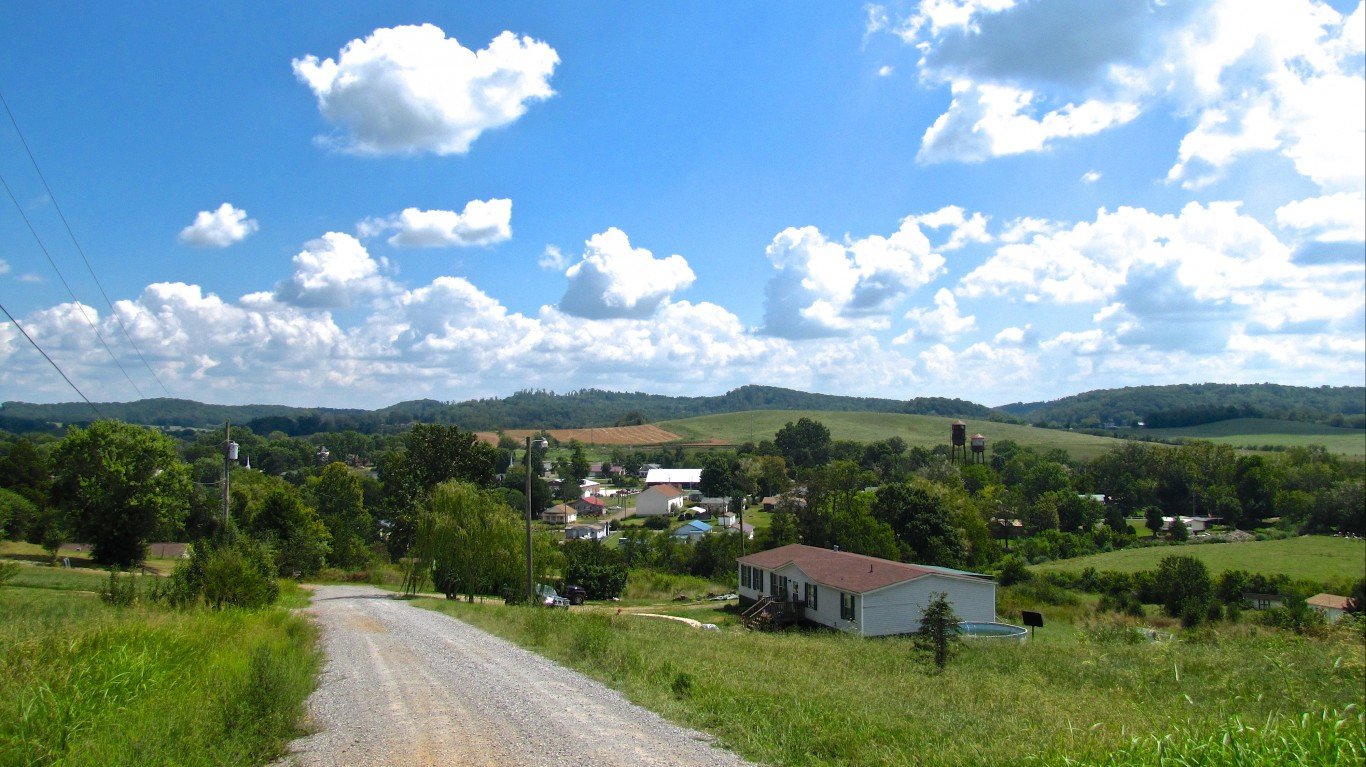These 9 States Still Have Dry Counties
December 12, 2019 by Evan ComenWhen the 21st Amendment repealed national prohibition in 1933, the power to regulate the sale and consumption of alcohol was left to the states. While 16 states explicitly prohibit the creation of dry localities — and Wisconsin state law does not address the local sale of alcohol — the majority of states allow local jurisdictions to regulate alcohol as they see fit.
24/7 Wall St. identified the states that still have dry counties and reviewed the history and effects of the prohibition laws governing them. While some counties contain cities or towns that allow the sale of alcohol in some form, we focused on counties that both prohibit the sale of alcohol within county borders and do not contain any municipalities that allow the sale of alcohol. Today, there are 83 counties in the United States where the sale of alcohol is completely prohibited. Dry counties are home to approximately 1.7 million Americans, or 0.5% of the U.S. population.
In many states with dry counties, laws restricting the sale of alcohol have long preceded national prohibition. Georgia, for example, first banned statewide alcohol sales in 1908, 12 years before the 18th Amendment and national prohibition went into effect. Mississippi first passed a statewide ban on alcohol sales in 1907, 13 years before national prohibition.
The majority of dry counties are located in the South, where religious beliefs echoing the Temperance Movement, which in the 1800s pushed for reduced alcohol consumption across the nation, continue to drive anti-alcohol sentiment. In other counties, the decision to ban alcohol may be related to public health. In Oglala Lakota County, South Dakota, for example — which ranks as the worst county to live in — alcohol abuse is rampant, and many advocates of prohibition believe that allowing the sale of alcohol may exacerbate the problem.
Advocates for repealing prohibition often cite the economic benefits of alcohol sales. Breweries and distilleries are major industries in the United States (here are America’s thriving industries in America), and can provide counties with millions of dollars in additional tax revenue. According to a study commissioned by Walmart, for example, turning all of Arkansas’ dry counties wet could generate an additional $100 million in economic activity annually.
For more on alcohol use in the United States, see how much people spend on alcohol in 22 major American cities.
Click here to see the states that still have dry counties
To determine the states that still have dry counties, 24/7 Wall St. used data from the National Alcoholic Beverage Control Association. NABCA data is current as of 2017 and was updated by 24/7 Wall St. using recent local news reports and government press releases.
Population data came from the U.S. Census Bureau’s American Community Survey and figures are five-year estimates for the period 2013 to 2017. Data on land and water area by county came from the Census Bureau’s 2010 decennial census. Data on the share of adults that report excessive drinking came from the 2019 County Health Rankings & Roadmaps, a collaboration between the Robert Wood Johnson Foundation and the University of Wisconsin Population Health Institute, and was aggregated for all dry counties using Census Bureau population data. All data are for the most recent period available.
1. Arkansas
> No. of dry counties: 34
> Population living in dry counties: 32.3% in 45.0% of state
> Pct. of adults who report excessive drinking in dry counties: 14.7%
The sale of alcohol is prohibited in 34 of the 75 counties in Arkansas, home to 32.3% of Arkansas’ population — the largest such share of any state. Like in most states, prohibition in Arkansas is a matter of local jurisdiction, but there are several state hurdles to passing laws allowing the sale of alcohol. Local initiatives on alcohol sales require the signatures of 38% of local registered voters to get on the ballot, far more than the 10% typically required for ballot initiatives.
Proponents for repealing prohibition often cite the economic benefits and tax revenues associated with the sale of alcohol. According to a study commissioned by the state’s largest retailer, Walmart, turning all of the state’s dry counties wet could generate an additional $100 million in economic activity annually.
[in-text-ad]
2. Florida
> No. of dry counties: 3
> Population living in dry counties: 0.2% in 3.1% of state
> Pct. of adults who report excessive drinking in dry counties: 16.4%
The three counties where the sale of alcohol is prohibited in Florida — Lafayette, Liberty, and Washington — are located in the Panhandle region and represent just 0.2% of the state’s population. Like most states with dry counties, Florida law allows local jurisdictions to hold public referendums to approve local laws and regulations relating to the sale of alcohol.
The most recent county to repeal prohibition in Florida, Madison County, voted to allow alcohol sales in August 2012. The county had previously banned the sale of alcohol in 1906, 14 years before national prohibition. Lafayette County, one of the remaining dry counties, voted for prohibition in 1912, eight years before the nationwide ban on alcohol.
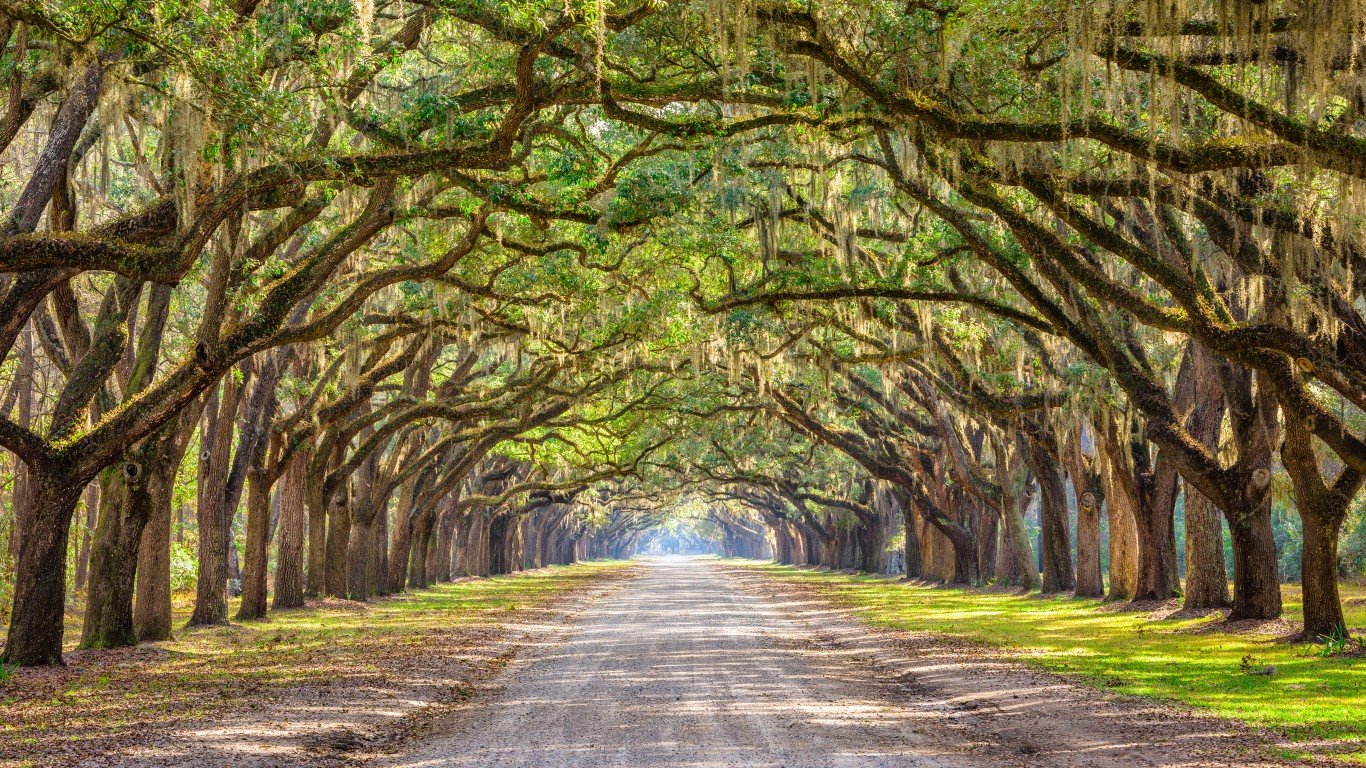
3. Georgia
> No. of dry counties: 5
> Population living in dry counties: 2.4% in 3.7% of state
> Pct. of adults who report excessive drinking in dry counties: 16.5%
Georgia first banned statewide alcohol sales in 1908, 12 years before national prohibition. Today, five of the 159 counties in Georgia still do not allow the sale of alcohol. Attitudes toward alcohol sales throughout the state were recently gauged in 2011, when Georgia held a local vote on repealing the statewide ban on Sunday alcohol sales. Some 83% of cities and counties that participated in the referendum favored an end to the ban.
Local prohibition laws may have little effect on the consumption of alcohol in Georgia’s dry counties. According to data from the research program County Health Rankings & Roadmaps, 16.5% of adults in Georgia’s dry counties drink excessively, more than the 15.1% of adults who report excessive drinking across the state.
4. Kansas
> No. of dry counties: 3
> Population living in dry counties: 0.3% in 2.6% of state
> Pct. of adults who report excessive drinking in dry counties: 15.6%
While national prohibition lasted from 1920 until 1933, a statewide ban on alcohol sales existed in Kansas from 1881 to 1948 — longer than any other state. Today, alcohol is still entirely banned in three counties in the state that cover 0.3% of the state population and 2.6% of land area.
Kansas is one of just three states that is entirely dry by default and requires localities to take specific steps to allow the sale of alcohol. While 102 of the 105 counties in Kansas have voted to legalize the sale of alcohol to the general public since the end of prohibition, alcohol sales are still subject to strict regulation in most parts of the state. In 67 counties, for example, restaurants must derive at least 30% of their revenue from food sales in order to sell liquor by the drink.
[in-text-ad-2]
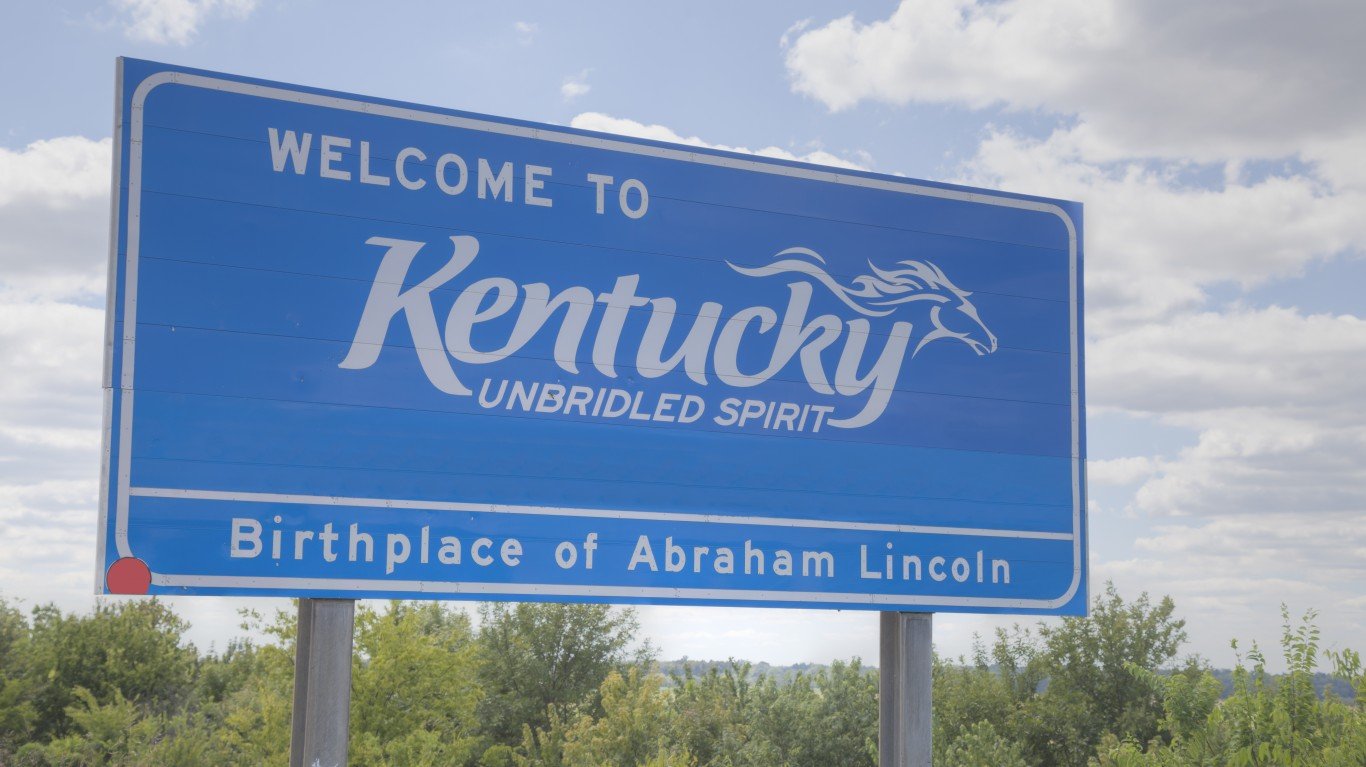
5. Kentucky
> No. of dry counties: 15
> Population living in dry counties: 3.8% in 11.3% of state
> Pct. of adults who report excessive drinking in dry counties: 13.3%
While Kentucky is home to some of the most famous bourbon brands in the country, such as Jim Beam and Maker’s Mark, the sale of alcohol is prohibited in 15 of the state’s 120 counties. Dry counties are home to 3.8% of Kentucky’s population, the third largest share of any state.
While the relationship between the legality of alcohol sales and consumption is complicated and is heavily affected by factors such as income and religion, states with more dry counties tend to have lower levels of excessive drinking. In Kentucky’s dry counties, just 13.3% of adults report drinking excessively, compared to 15.8% of adults throughout the state and 18.0% of adults nationwide.

6. Mississippi
> No. of dry counties: 12
> Population living in dry counties: 7.1% in 12.8% of state
> Pct. of adults who report excessive drinking in dry counties: 13.3%
Mississippi first passed a statewide ban on alcohol sales in 1907, 13 years before national prohibition. Mississippi was also the last state in the country to repeal prohibition, doing so in 1966 — 33 years after the 21st Amendment ended national prohibition. Today, Mississippi is one of three states that is entirely dry by default and requires localities to take specific actions to permit the sale of alcohol. The sale of alcohol is still illegal in 12 of the 82 counties in the state.
Some researchers believe that a dry county status may be associated with a higher drunk driving fatality rate, as residents of dry counties who elect to consume alcohol must drive longer distances. In the 12 dry counties in Mississippi, there are 7.1 drunk driving fatalities per 100,000 residents, nearly twice the statewide rate of 3.5 fatalities per 100,000 residents.
[in-text-ad]
7. South Dakota
> No. of dry counties: 1
> Population living in dry counties: 1.7% in 2.7% of state
> Pct. of adults who report excessive drinking in dry counties: 15.2%
Located within the Pine Ridge Indian Reservation, Oglala Lakota is currently the only dry county in South Dakota. While the reservation voted to legalize the sale of alcohol by a narrow margin in 2013, the vote was highly controversial, and the law was never implemented.
Save for several months in 1970, the sale of alcohol has been illegal on the Pine Ridge Indian Reservation since the ban came into effect in 1889. Alcoholism has long plagued the reservation — about two in three adults suffer from alcoholism, and one in four babies exhibit defects caused by fetal alcohol syndrome. While proponents of lifting the ban argue that the revenue from alcohol sales could fund alcohol abuse treatment programs, opponents argue that repealing prohibition could exacerbate the problem.
8. Tennessee
> No. of dry counties: 5
> Population living in dry counties: 1.1% in 3.4% of state
> Pct. of adults who report excessive drinking in dry counties: 12.9%
Tennessee became the first state in the country to pass a prohibition law in 1838 — 82 years before national prohibition — when it made the sale of alcoholic beverages in taverns and stores a misdemeanor. The state outlawed the manufacturing of alcohol in 1909 and possession in 1917, turning the state completely dry. While Tennessee repealed statewide prohibition in 1937, five of the 95 counties in the state remain completely dry today.
While the relationship between alcohol availability and consumption is complicated and is affected by factors such as income and religion, states with more dry counties tend to have lower levels of heavy drinking. Just 12.9% of adults in Tennessee’s dry counties report drinking excessively, compared to 14.4% of adults throughout the state and 18.0% of adults nationwide.
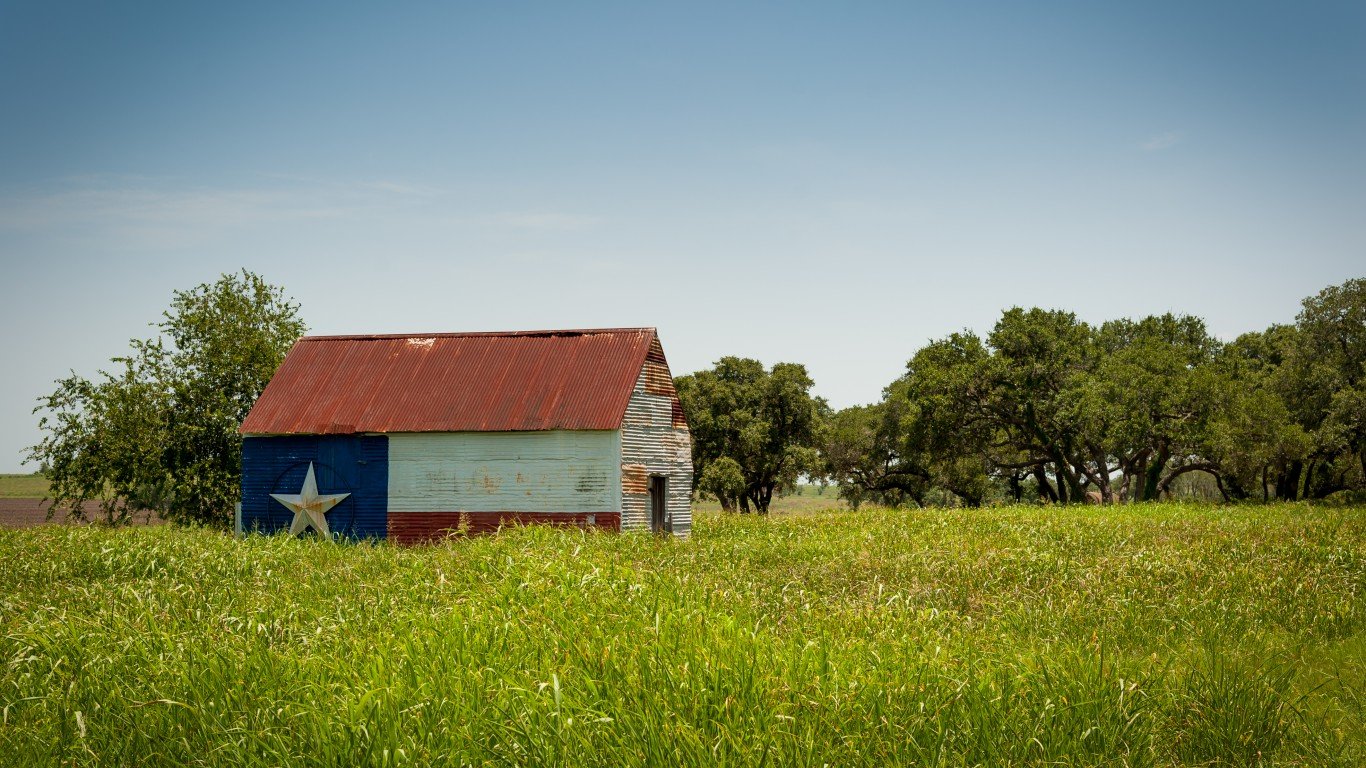
9. Texas
> No. of dry counties: 5
> Population living in dry counties: <0.1% in 1.7% of state
> Pct. of adults who report excessive drinking in dry counties: 19.1%
Statewide prohibition in Texas lasted from 1919 to 1935, about the same time as national prohibition. Like a majority of states, Texas gave local jurisdictions the power to regulate alcohol sales through public referendums when it repealed prohibition.
While 132 of the 254 counties in Texas were completely dry by 1959, that number fell to 30 by 2009. Since then, more than two dozen counties in Texas have voted to allow some form of alcohol sales, and today, just five counties — Borden, Hemphill, Kent, Roberts, and Throckmorton — remain dry, representing less than 0.1% of the state population. Voters in the most recent county to go wet, Martin County, approved the sale of beer and wine in the county seat of Stanton in 2018 by a 33 point margin.
Take This Retirement Quiz To Get Matched With A Financial Advisor (Sponsored)
Take the quiz below to get matched with a financial advisor today.
Each advisor has been vetted by SmartAsset and is held to a fiduciary standard to act in your best interests.
Here’s how it works:
1. Answer SmartAsset advisor match quiz
2. Review your pre-screened matches at your leisure. Check out the
advisors’ profiles.
3. Speak with advisors at no cost to you. Have an introductory call on the phone or introduction in person and choose whom to work with in the future
Take the retirement quiz right here.

